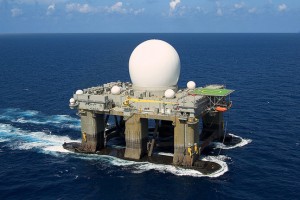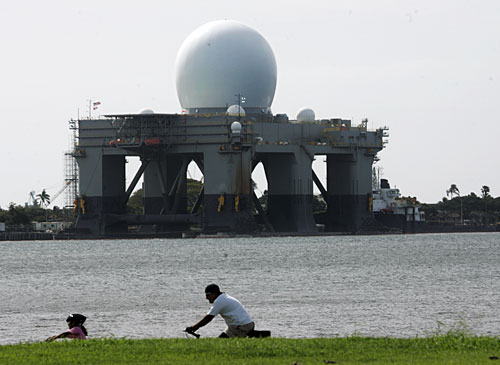Pearl Harbor, Part II?
Good analysis of the North Korea crisis.
Pearl Harbor, Part II?
by JOHN FEFFER | Tuesday, June 23, 2009
The war in Afghanistan is ugly. The conflict in Iraq is still seething. The prospect of Pakistan’s collapse is terrifying.
But the real nightmare scenario, or so the media headlines suggest, involves North Korea. Its leader is wacko. It’s adding to its nuclear arsenal. It’s making preparations for a missile launch aimed at Hawaii.
The Japanese attacked us 68 years ago. The Pentagon is bracing for Pearl Harbor, part II. This is serious stuff. The Taliban might be crazy, but they don’t have nukes and we don’t expect them to bomb Waikiki any time soon.
Never fear: the Obama administration has crafted a robust response to North Korea. We pushed through a UN resolution, with Chinese and Russian support, that ups the sanctions against Pyongyang and authorizes the naval interdiction of North Korean vessels suspected of delivering weapons or other suspicious materials. We sat down with South Korean leader Lee Myung-bak and reaffirmed our willingness to retaliate with nuclear weapons if the South is attacked. We’ve beefed up our defenses in Hawaii. We’re currently tailing a North Korean ship as it heads toward Burma.
In his eagerness to show that he has the strength of will to confront a nuclear bully, President Barack Obama hopes to dispel any illusions – among conservatives here, among the leadership in North Korea – that he’s a “cut-and-run” kind of guy. He can multitask. He can talk and prepare for war at the same time. This guy can take care of pesky flies like North Korea.
I’m not sure who’s giving the president his advice on North Korea. But it’s all wrong. His show of “resolve” has only made matters worse.
Myth 1: North Korea is about to attack Hawaii: North Korea has two long-range missiles, the Taepodong-1 and the Taepodong-2. The first, likely used only for satellite launches, can maybe go 2,500 miles. But it’s never been successfully tested. The Taepondong-2 maybe could go about 3,700 miles. But it too has failed in its two tests: a quick fizzle in 2006 and a failure in the third stage this last April. Even if Pyongyang gets everything right for a possible July 4 test, it’s 4,500 miles between Pyongyang and Honolulu. As for putting a nuclear warhead on the top of it, North Korea has shown no evidence that it has the necessary miniaturization technology.
Myth #2: North Korea is a military threat: North Korea has a lot of people in uniform, and its artillery can cause horrific damage to Seoul. But North Korea spends about half a billion dollars a year on its military. South Korea alone spends 40 times that amount. And the United States spends 1,000 times more. Neither China nor Russia would support any North Korean military action. Militarily speaking, North Korea is a kamikaze country. It can inflict damage, but only in a suicide attack and only close to home.
Myth 3: We really showed them at the UN: The Security Council statement in April and the resolution in June certainly communicated international anger at North Korea’s rocket and nuclear tests. But we overreacted to the April launch. We should have treated it as a satellite launch and pressed forward with negotiations. Instead, North Korea responded to our fierce words by upping the ante and conducting a second nuclear test. The UN statement was as satisfying as hitting a problem with a baseball bat – except that the problem in this case was a hornet’s nest. The more recent resolution, meanwhile, represents a dangerous escalation: a confrontation at sea might trigger a much larger conflict.
Myth 4: Kim Jong Il is crazy and North Korea is an unpredictable rogue state: Actually, North Korean reactions have been quite predictable and, at least within the North Korean context, rational. Pyongyang was unhappy with the course of negotiations and its relative lack of priority on Obama’s to-do list. Rocket launches and nuclear tests have yielded both attention and concessions in the past, so they went with what works. And they telegraphed their moves well in advance. The leader of North Korea runs a brutal state and a mind-numbing personality cult. And North Korea’s official statements often sound like the scripts from bad horror movies. But Kim Jong Il worked out shrewd deals in the past – with the Clinton and Bush administrations, with the Kim Dae-Jung and Roh-Moo Hyun governments in South Korea, and even with Junichiro Koizumi in Japan back in 2002. If he’s mad, there’s a method in his madness.
We are retracing the same steps as 1993-1994, a path of escalation that nearly led to war. As I write in The Obama-Lee Summit: Dangerous Consensus?, “North Korea, with so little to lose, is the master of brinksmanship. It is not wise to enter into a tit-for-tat match with such a country. At this point, more important than finding common ground between the United States and South Korea is establishing common ground between North Korea and the rest of the world. By all means, Washington and Seoul should coordinate policy. But they should also keep their eyes on the prize: resolving the current crisis with North Korea without resorting to force.”
The United States should focus on nuclear nonproliferation, urges Foreign Policy In Focus contributor Wade Huntley, and make sure North Korea doesn’t cross that red line. In the meantime, Washington should continue taking steps toward nuclear abolition. “Complete nuclear abolition need not be fully achieved in order to realize the constitution of a global security order that eliminates all threats of nuclear conflict,” he writes in Dealing with North Korea’s Tests. “And as the rest of this community becomes warmer, it will become increasingly tempting for North Korea to come in out of the cold.”
It’s definitely frustrating to negotiate with North Korea. And many respected analysts have serious doubts as to whether Pyongyang will ever give up its nuclear weapons. But when we were talking seriously with North Korea, it kept its plutonium program frozen (Clinton) or began dismantling it (Bush), and its long-range missile program was still rudimentary. That beats war every time. In 1994, former President Jimmy Carter helped avert confrontation by visiting Pyongyang and working out a compromise. Maybe the Man from Plains can get on the plane again. The escalation must stop: It’s time to talk.
Source: http://www.fpif.org/fpifzines/wb/6210








